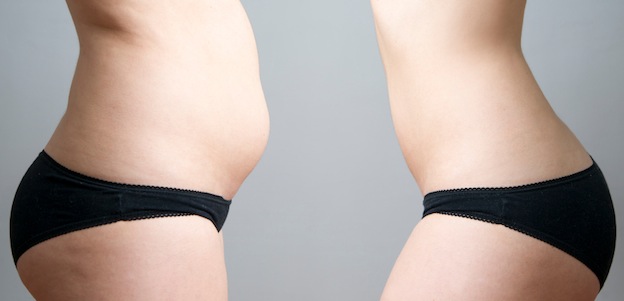SingaporeMotherhood | Parenting
January 2015
Diastasis Recti: Not Just A Baby Belly

That post-baby tummy fat you’ve been carrying around might just be a condition called diastasis recti. Don’t worry, this condition is usually harmless.
It is a well-known fact that some effects of pregnancy on your body last long after your baby is born. One fairly common condition in the postpartum period is diastasis recti. This happens when your belly just won’t go away because of the effect that pregnancy has had on your abdominal muscles, as the growing uterus stretches the muscles in your abdomen.
[banner][/banner]
As Dr Wendy Teo, Obstetrician and Gynaecologist, Mount Elizabeth Novena Hospital puts it, “the abdominal muscles distinctly separate into the left and right half, causing the tummy to protrude”.
“Diastasis refers to the separation of two parts that are normally joined together,” adds Dr Watt Wing Fong, Specialist in Obstetrics and Gynaecology, and Consultant at Raffles Women’s Centre.
“In this case, the condition is known as diastasis recti (also known as abdominal separation), which is defined as a separation of the rectus abdominus muscle into right and left halves. This is due to the stretching of the linea alba, which normally connects the left and right rectus abdominis muscle in the midline.”
Diastasis recti usually develops in the late stages of pregnancy but is only noticeable after a woman has given birth. According to Dr Teo, two out of three women may have this condition post-delivery, but recover from it well.
There are, of course, certain groups of women who are more prone to the condition, including those who have had multiple pregnancies and women with close consecutive pregnancies. Women aged over 35 are also at an increased risk, as are women who are carrying big babies.
No Harm Done
While it’s a fairly common condition, diastasis recti is also a relatively harmless one. “The condition is usually harmless,” says Dr Watt. “However, if there is a hernia, complications may result. It is important to distinguish diastasis from a hernia.”
It’s also important to differentiate between the condition and extra belly fat that won’t go away. The time period of having this belly fat is also a way in determining the possibility of having diastasis recti.
“One year is a reasonable time frame for the body to revert to its pre-pregnancy state,” says Dr Teo. “If it doesn’t improve by then, seek help.”

“Diastasis recti may begin to manifest in the third trimester and often continues into the postpartum period,” says Dr Watt. “Typically, the separation of the abdominal muscles will lessen within the first year after childbirth. However, it is possible to remain after this time.”
If you think you might have the condition, make an appointment with your doctor to get checked so you can be sure as the diagnosis can be made with a physical examination.
“The examination is performed with the subject lying on their back, knees bent at 90 degrees with feet flat, head slightly lifted, chin on chest. With muscles tense, examiners then place fingers in the ridge that is presented. Separation consisting of a width of two fingertips (approximately 1.5 centimetres) or more is the determining factor for diagnosing diastasis recti,” says Dr Watt.
The Right Exercises
The good news is, even if you do have the condition, diastasis recti does not effect the function of the abdomen or other parts of the body – unless there’s a hernia. The bad news is, it may make it more difficult to lift heavy loads and some women may also experience lower back pain (because the abdominal muscles get weak).
There are some ways of preventing diastasis recti, such as doing abdominal exercises to strengthen the core muscles even before getting pregnant, as Dr Teo suggests. However, planning ahead is not always possible, so thankfully, there are other things you can do post-pregnancy as well, as Dr Watt suggests.
1. Ensure good posture. Avoid the ‘sway back’ posture where the hips and tummy are pushed forward. This weakens the abdominal muscles.
2. Do the correct exercises during pregnancy and after delivery to minimise the risk of diastasis recti. Incorrect exercises, including crunches, can actually increase the risk of diastasis recti. All corrective exercises should be in the form of pulling in of the abdominal muscles rather than pushing them outwards.
3. In severe cases, see a physiotherapist. Tupler Technique exercises have been shown to reduce the severity of diastasis recti.
All content from this article, including images, cannot be reproduced without credits or written permission from SingaporeMotherhood.
Follow us on Facebook, Instagram, and Telegram for the latest article and promotion updates.





